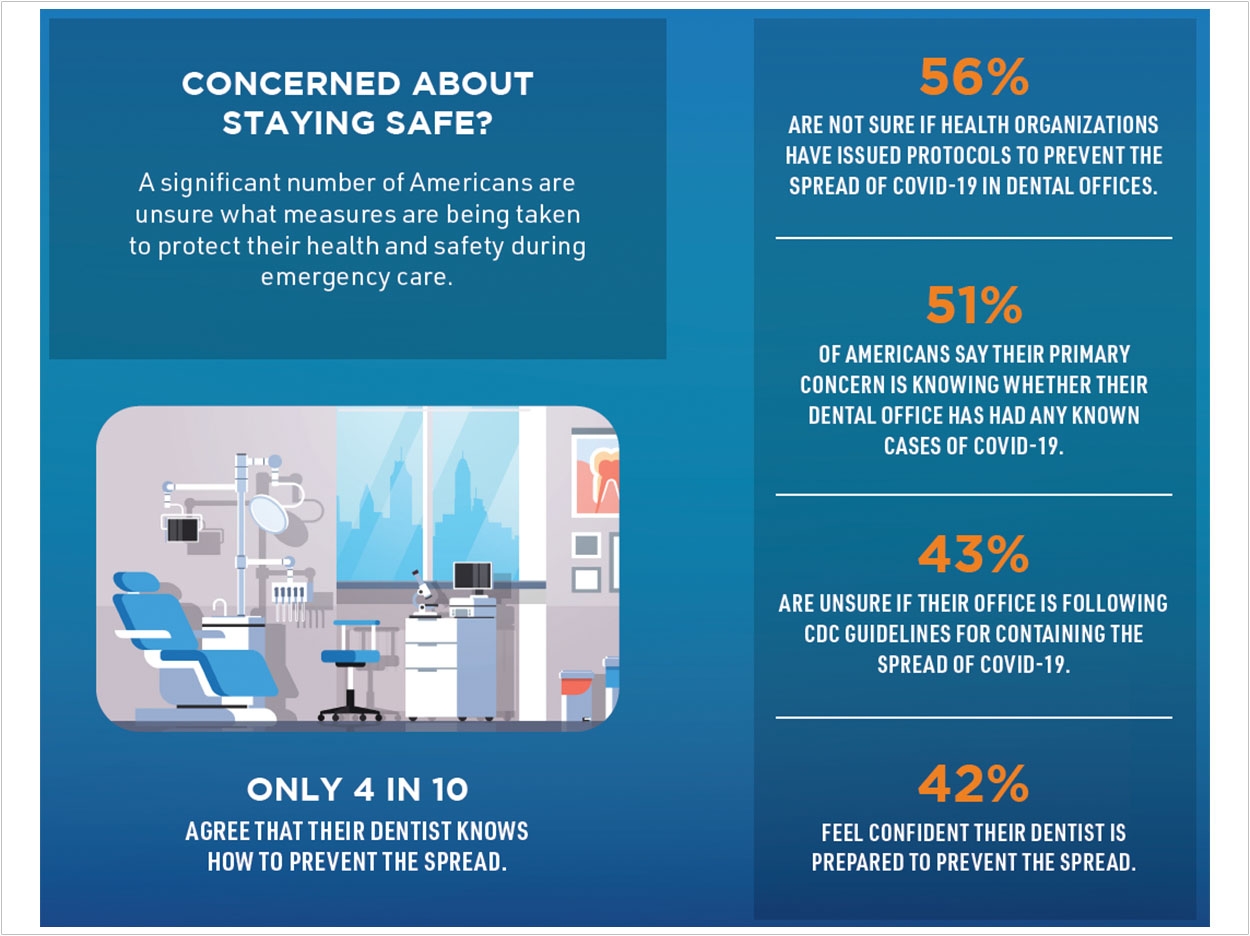
An overwhelming number of Americans have significant concerns about seeking dental treatment during the COVID-19 pandemic, according to an April 3-6 study commissioned by the North American Dental Group (NADG).
Almost three-quarters of those who participated in the survey (71%) said they are uncomfortable about visiting their dentist during the pandemic for non-time sensitive dental procedures, though most (54%) would be comfortable doing so for a dental emergency.
And while 77% said they were concerned about their personal health and safety during the pandemic, only 42% are confident that their dentist is prepared to prevent the spread of COVID-19 at their office.
This disconnect presents a challenge for dental offices to ensure patients that they are taking adequate measures to protect their health and safety during emergency care and, importantly, when they resume routine dental care, NADG said.
The study also found that 43% of Americans have either delayed a dental checkup or a needed dental procedure or developed a new dental issue during the social distancing period.
“The findings are worrying as a significant number of Americans are putting off dental care, whether by choice or to comply with national and state guidelines, which could lead to meaningful problems in the future,” said Dr. Andrew Matta, NADG’s chief medical officer.
“However, it is understandable that concern regarding overall health and safety is paramount during the COVID-19 pandemic,” said Matta.
“To be clear, patients should only visit the dentist if they have a dental emergency, and they should consult with their dentist prior to visiting the office to confirm the necessity of the visit,” Matta said.
Also according to the survey:
- 56% aren’t sure if health organizations have issued protocols to prevent the spread of COVID-19 in dental offices.
- 39% believe that offices are only open for emergencies, 27% think that offices are closed, and 34% aren’t sure.
- Half of Americans believe the most important consideration for visiting the dentist during the pandemic is knowing whether there have been any known cases of COVID-19 in their office.
- Other factors for visiting their dentist include if the dentist is following CDC guidelines for containing the spread of COVID-19 (43%), if the dentist is taking medical precautions to prevent the spread of COVID-19 during exams (40%), and if/how the dentist is screening patients for COVID-19 before dental treatment (40%).
Concerns about personal health and safety overall during the pandemic increases with age. As 77% said they were concerned overall, only 65% of those between the ages of 18 and 34 were concerned, followed by 77% for those age 35 to 54 and 86% for those 55 and older.
Matta encourages patients who must visit their dentist to:
- Contact their dentist to determine if they require treatment for a dental emergency or if it can wait.
- Only seek care if they are healthy and don’t suspect that they have been exposed to COVID-19.
- Arrive on time for their appointments by themselves.
- Maintain social distancing and good hygiene while they are in the office.
- Ensure they understand and follow any provided discharge instructions to avoid the need for unnecessary follow-up care.
“Each NADG affiliate that is open to treat emergency dental procedures is taking added steps to ensure that our patients, team members, and dentists are protected, including screening patients before they enter the practice, limiting access to the waiting room, using appropriate PPE, and frequently sanitizing all surfaces,” said Ken Cooper, NADG CEO.
“We want our patients to know that while any non-emergency dental procedure should wait, if an emergency requires a visit to a NADG-supported office, they can have the confidence that we’re prioritizing their safety,” said Cooper.
Related Articles
Dentistry on the COVID-19 Frontlines
How to Create a Resilient Practice During Tough Times
Better Together: Navigating the COVID-19 Crisis












